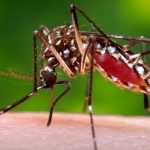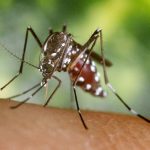- Citas Centro Médico de Caracas: Lunes, Miercoles y Viernes. Pulse el botón Agende una Cita
- Sistema de citas en linea exclusivo para Centro Medico de Caracas en San Bernardino
- Citas CMDLT: Jueves. llamar al 0212-9496243 y 9496245
- Las Emergencias son atendidas en CMDLT previa coordinacion personal al 04142708338
- Proveedor Seguros Mercantil y Sudeban
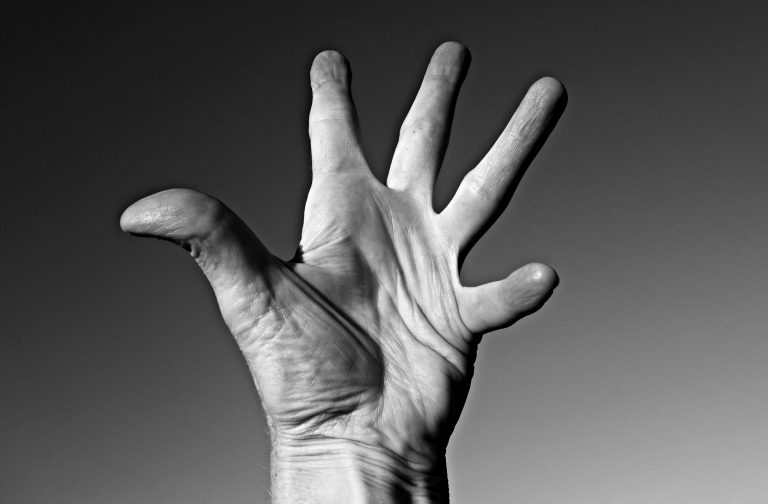
Chikungunya fever is a viral disease transmitted to humans by mosquitoes, was first described during an outbreak in southern Tanzania in 1952. It is an RNA virus of the genus Alphavirus, family Togaviridae. “Chikungunya” is a voice of the Kimakonde language that means “bending”, referring to the curved aspect of patients due to joint pain. The infection is transmitted by a mosquito (Aedes aegypti and Aedes albopictus) and there is no person-person transmission
Figures and data
Chikungunya fever is a viral disease transmitted to humans by infected mosquitoes. In addition to fever and strong joint pain, it produces other symptoms, such as muscle aches, headaches, nausea, fatigue and skin rashes. There are no symptoms until 28% of the cases
Some clinical signs of this disease are the same as those of dengue, which can be confused in areas where it is frequent.
Because it has no curative treatment, treatment focuses on relieving symptoms.
An important risk factor is the proximity of homes to mosquito breeding sites.
Sources: World Health Organization, CDC Atlanta, Chikungunyavirusnet, PAHO
Transmission
The virus is transmitted from one person to another by the bite of infected female mosquitoes (Aedes aegypti and Aedes albopictus) two species that can also transmit dengue. These mosquitoes usually itch throughout the daytime, although their activity may be high at the beginning of the morning and at the end of the afternoon, both outdoors and inside indoor environments.
The disease usually appears between 4 and 8 days after the bite of an infected mosquito, although the interval may range between 2 and 12 days.
Signs and symptoms
Chikungunya fever is characterized by sudden onset of fever, usually accompanied by joint pain (there may be joint inflammation). Other frequent signs and symptoms are: muscle aches, headaches, nausea, fatigue, and skin rashes. Joint pains are usually debilitating, but usually disappear in a few days.
Fever
It could be intense and has a biphasic tendency. First there is a fever for a few days, returns to normal temperature and again rises above normal levels, up to 40 ° C after not having a fever one or two days (biphasic fever). Then, after a couple of weeks of the first day, everything returns to normal.
Joint Pain (arthritis)
Joint pains are severe, migratory and tend to worsen during the mornings, improve with gentle exercise, but worsen with aggressive and vigorous movements. These pains are felt immediately after or at the same time as the Fever. The joints that usually suffer are: the wrists, the ankles, the knees, the elbows, the small joints of the hands and feet, and sometimes the shoulders and the hip. Arthralgia can severely limit your activities: getting out of bed, crouching, walking, climbing stairs, etc.
Rash
Half of Chikungunya patients show skin rashes. These consist of small reddish blotches or papules (maculopapular), although vesicles and/or blisters may occur. The rash appears two to five days after the fever normally in the torso, legs, soles of the feet, palms, and in the face. The presentation is variable, sometimes precedes the fever. The bath with cold or warm water improves the injuries and the hot water worsens them.
Diagnosis
Several methods can be used to set the diagnosis. It is possible to confirm the presence of IgM antibodies (it becomes positive between 3 and 5 weeks after the onset of the disease) against the chikungunya virus so the serological diagnosis is negative during the acute phase of the disease.
Viral PCR: It can potentially detect the virus in the early days of the disease but it is expensive, it is not readily available and not well studied
Treatment
There is no specific treatment for treating chikungunya fever. Treatment consists mainly in relieving symptoms, including joint pain and fever, with antipyretics, anti-inflammatory analgesics and fluids. There are no vaccines against the chikungunya virus.
Prevention and control
The proximity of the dwellings to the breeding sites of the mosquito vectors is an important risk factor for both chikungunya fever and other diseases transmitted by the species concerned. Prevention and control are largely based on the reduction in the number of natural and artificial water deposits that can be used as a breeding ground for mosquitoes.
This requires mobilizing affected communities. During the shoots, insecticides can be applied, either by vaporization, to kill the bags in flight, or on the surfaces of the deposits or around them, where the mosquitoes pose; Insecticides can also be used to treat water from deposits in order to kill immature larvae.
Protection during outbreaks it is recommended to wear clothing that minimizes skin exposure to vectors. Repellents may also be applied to the skin or clothing, strictly adhering to the instructions for use of the product.
For those who sleep during the day, especially young children, the sick and the elderly, insecticide-treated mosquito nets provide good protection. Spirals, repellent inserts and insecticide vaporizers can also reduce pitting in indoor environments.
People traveling to hazardous areas should take basic precautions, such as using repellents, long trousers and long-sleeved shirts, or installing mosquito nets on windows. Vitamin B12 injected or part of topical creams are arguably useful to keep mosquitoes away
Complications and recovery
Serious complications are not frequent, but in older people the disease can contribute to death. Patients often only have mild symptoms and the infection may be inadvertently or misdiagnosed as dengue in areas where it is frequent.
Most patients will recover completely (87%), but in some cases joint pain may last several months, or even years. Occasional cases have been reported with ocular, neurological and cardiac complications, and also with gastrointestinal discomfort.
The vectors
WHO response
The fight against Chikungunya Fever:
- formulates evidence-based plans to manage outbreaks;
- provides technical support and guidance to countries to effectively manage cases and outbreaks;
- supports countries to improve their reporting systems;
- together with some of its collaborating centers, it provides training at a regional level on the treatment, diagnosis and control of vectors;
- It publishes guidelines and manuals for Member States on the treatment and control of vectors.
WHO encourages countries to create and maintain capacities that enable them to detect and confirm cases, care for patients and implement social communication strategies to reduce the presence of mosquito vectors.
During pregnancy
Pregnant women have symptoms and evolution similar to other populations. Most infections will not be transmitted to the fetus and can rarely be established as a cause of miscarriage and stillbirth.
The dangers of birth during acute infection should be discussed with the neonatologist.
In a comparative study of 628 uninfected pregnant women and 658 infected women, it was not observed a significant difference in the evolution of the pregnancy beyond the hospitalizations required for the symptomatic treatment of the infection.
The disease was confirmed by PCR of the virus (detection rate of 93%) and, comparing with the clinical manifestations, it was concluded that the clinic is excellent for diagnosing the infection during an epidemic outbreak.
Viral infection of the placenta was found only in one (1) case of 628 studied, establishing the rarity of vertical infection from the mother to the fetus. During vaginal delivery, the passage of the virus to the fetus is possible due to the placental lesions and maternal-fetal transfusion of the vaginal delivery process
Abortions and uterine death were not more frequent in the infected group than in the Uninfected group. Even in the presence of intense fever, no fetal deaths occurred
There were no hemorrhagic complications
There were similar congenital malformations in both groups, indicating that the virus as such has no fetal impact even when the infection occurred in the first trimester (99 cases); Likewise, there were no long-term sequelae due to viral exposure in uterus
The interruption of pregnancy due to this cause is not indicated .
Ritel X et al. Chikungunya virus infection during pregnancy, Réunion, France, 2006. Emerg Infect Dis 2010.
Treatment: symptomatic
- Repose
- Hydration
- Cold compresses in the joints
- Antiallergic
- Acetaminophen: max 4 gr per day, 2 tablets of 500 mg every 6 hours for 3-5 continuous days
- If the fever is sustained and greater than 39 degrees it is advisable to take warm water baths to avoid potential neurological damage to the fetus
- Ibuprofen, before week 32 and after consultation with the obstetrician
The story of Theresa and Aaron, July 2014
Theresa and Aaron live in a paradise island of the Caribbean, Saint Croix, Virgin Islands (US Virgin Islands) and they allowed me to tell it:
Symptomatic evolution of a typical case Chikungunya
First Day, July 3: Theresa began to manifest unspecific general malaise, a discrete centrifugal eruption in chest and face and mild palpebral edema, preceded by a couple of days of sleeplessness and palpitations without a known cause
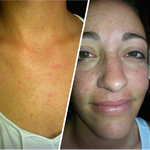
Second Day, July 4: During the celebrations of July 4 there is discomfort in the joints of the wrists
Third Day, July 5: The malaise has worsened and it adds mild fever and discomfort in the joints of the ankles to those already existing in the wrists. The rash reaches legs and arms
Fourth day, July 6: Dawn, the face is less swollen even though the eyes are a little painful, the rash is basically the same, swelling and pain in the joints of the hands is worsening and limit domestic chores throughout the day but improve with acetaminophen, ibuprofen and a nap. At the end of the day the situation worsens and fever is higher (38.8 º C) and the rash is exacerbated covering the whole body

Fourth Day, July 7: The day begins badly and worsens as the hours go by. Fever is intense and preceded by chills. Most notable is the joint pain in the ankles that limits mobility and ambulation, but does not prevent it, you can still walk without help. Acetaminophen and ibuprofen with partial response. Cold showers and compresses to relieve fever and symptoms. She looks really sick but vitals are normal except for the fever. Fever yields at sunrise on July 8th, leaving her exhausted.
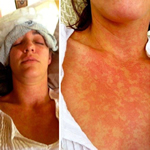
Sixth Day, July 8: Joint pain is severe, limiting all mobility without help, she cannot walk alone or grab objects with her hands. Walking generates excruciating pain in the lower limbs. Intense fever with chills. Eruption more intense and bright and we haven’t gotten to the worst
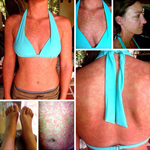
Seventh Day, July 9: The worst day of all. Joint pain is so intense that mobilization is impossible. She had to crawl on her back to get to the bathroom as she did not have help at the time. The joint pain was so exquisite (the medical term that identifies the most intense pain you can feel) that didn’t even allow her to crawl. Fever and vomiting. They take blood samples for diagnosis.
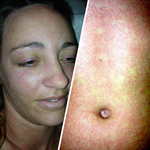
Eighth Day, July 10: Vomiting, fever and joint pain, intense but stable, no longer worsening, she arrived at the symptomatic plateau. Towards the end of the day defervescence begins, the clinical manifestations begin to recede.
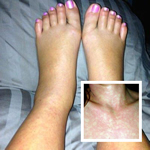
Ninth Day, July 11: General symptomatology disappearing, no more fever, rash begins to clear and joint inflammation and pain have improved
A couple of weeks later she was alright, joint pain persisted for a few weeks

